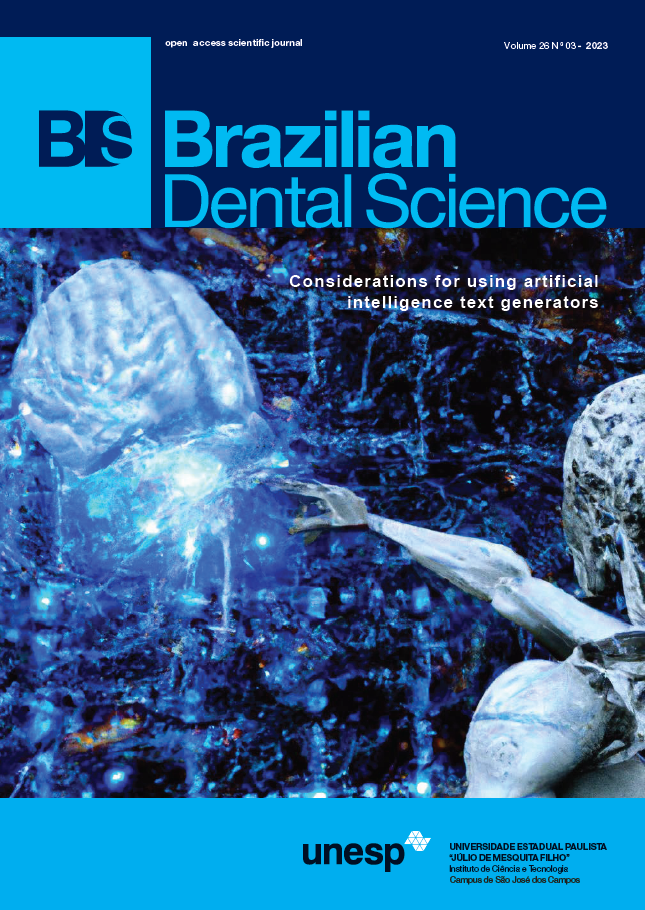The influence of the retention feature in artificial teeth on its attachment to the thermoplastic resin denture base
DOI:
https://doi.org/10.4322/bds.2023.e3770Abstract
Objective: Teeth play a crucial role in masticatory efficiency and esthetic harmony making rehabilitation of partially edentulous patients a challenge because of the limitations of conventional removable partial dentures. As a therapeutic alternative, thermoplastic polymers are used in current dental practice either for practical processing purposes or aesthetics. However, it is recognized that the bond between acrylic resin artificial teeth and thermoplastic polymers has no chemical interaction, and depends on retentive features added to the teeth. This study analyzed the efficacy of two retentive forms of features through compressive strength test and as a secondary outcome, fracture and displacement resistance test. Material and Methods: Three groups of samples each with 14 sets of acrylic teeth were compared when two retentive features, single hole and groove retention, and a control group with teeth without any specific form. The experimental unit consisted of six maxillary anterior teeth, positioned in a linear pattern into a polypropylene block, where each tooth was submitted to a static load until its removal, on a universal testing machine. Results: Those specimens with a groove retention presented larger resistance to displacement when compared to the other groups (p <0.05). This was emphasized by the fracture of the tooth tested, with part of the cervical portion remaining embed in the base, and not its displacement as with (or without) the retentive feature. Conclusion: In this study, the type of retention influenced significantly to a better retention considering teeth and thermoplastic polymer base. The data in this study indicates that a groove placed on the artificial tooth offers significantly better retention efficacy to the point where the displacement was only possible after its fracture.
KEYWORDS
Artificial teeth; Acrylic resins; Denture base; Polypropylene; Retention.
Downloads
Published
How to Cite
Issue
Section
License
Brazilian Dental Science uses the Creative Commons (CC-BY 4.0) license, thus preserving the integrity of articles in an open access environment. The journal allows the author to retain publishing rights without restrictions.
=================




























